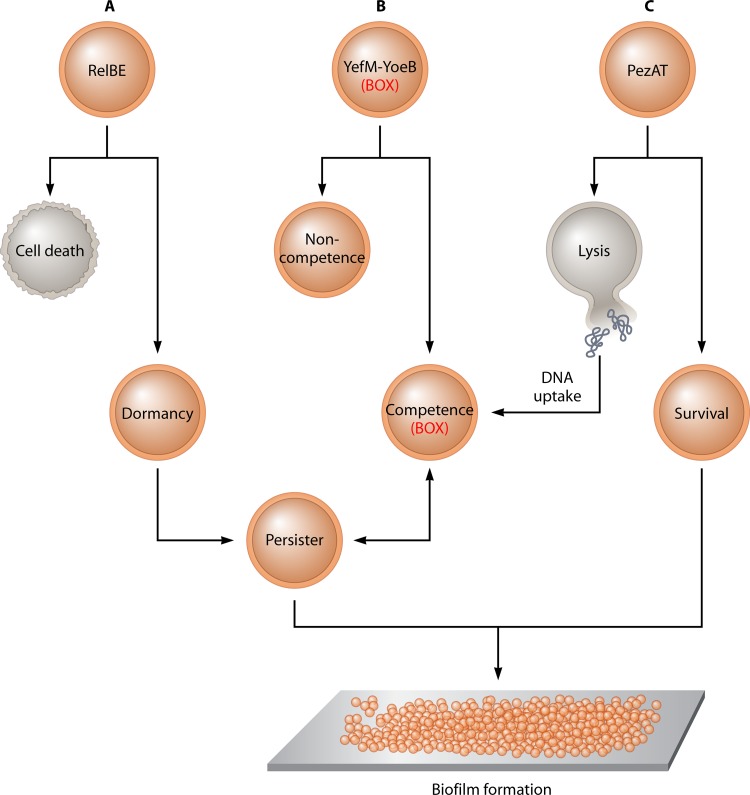Fig 7.
Model of the possible bistable behavior of S. pneumoniae cells subjected to stress. (A) Antibiotic stress may lead to RelE2-mediated cell death for part of the population, but part of the cells would undergo dormancy instead (i.e., persister cells) and are thus tolerant toward the antibiotics. (B) Preliminary results indicate that the deletion of the yefM-yoeB TA locus led to decreased competence in S. pneumoniae (Moreno-Córdoba et al., unpublished). Under stressful conditions, a fraction of cells would undergo a genetic competent state, whereas the rest would remain noncompetent. yefM-yoeB and some genes involved in competence were related to the pneumococcal BOX element, raising speculation on the role of BOX. (C) PezT was demonstrated to be involved in cell lysis under harsh environmental conditions, thus releasing DNA that could be taken up by the competent sibling cells, whereas the cells that survive, which also include persister cells, could in turn facilitate biofilm formation. All these processes would result in S. pneumoniae cells displaying bistable behavior under conditions of stress that perhaps involve, directly or indirectly, the three known pneumococcal TAS.

